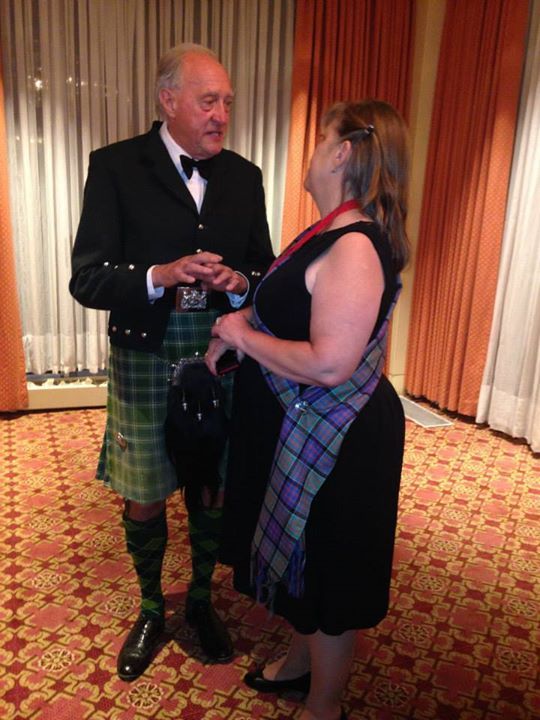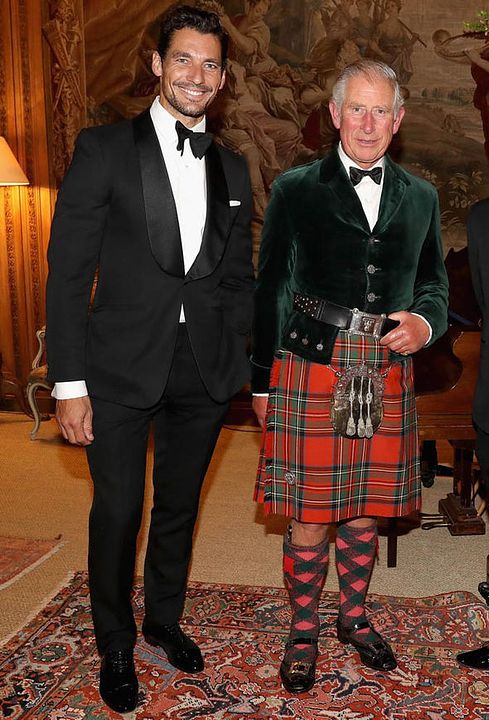|
-
2nd December 21, 06:02 AM
#11
Sporran Etiquete
Thanks all for such helpful responses.
The bride will be rapt as she is an "out there" girl and has already given the seal of approval for the Kilt etc. Was disappointed in fact when I wore the Ramsay Blue (hunting) to my nieces wedding as she thought I was saving it or her wedding. I reassured her that her wedding was under control as I had only worn the Ramsay Blue, with hunting sporran and a Ghillie shirt and no jacket etc as it was an outdoor casual afternoon wedding as opposed to hers which is very formal in a castle and listed as "Black Tie'
She is unaware of the Sporran change -until this one turned up I only had the hunting one similar to Steve's- so it will set it all off nicely I think being "Father of the Bride"
I note McMUrdo that you have your belt on the outside o your jacket in one o the photos, I had not seen this before, pray do tell the story behind.
-
-
2nd December 21, 05:11 PM
#12
-
The Following 2 Users say 'Aye' to McMurdo For This Useful Post:
-
3rd December 21, 11:59 PM
#13

 Originally Posted by McMurdo

Nathan looks grand. I love the colour of the doublet, the hose are perfect, and, if I may say so, he looks much better without the beard. No offense, Nathan.
"Touch not the cat bot a glove."
-
-
4th December 21, 12:28 AM
#14
 Originally Posted by McMurdo

Wasn’t the belt over doublet originally supposed to be so a dirk could be worn for formal occasions, or am I wrong?
Tha mi uabhasach sgith gach latha.
“A man should look as if he has bought his clothes (kilt) with intelligence, put them (it) on with care, and then forgotten all about them (it).” Paraphrased from Hardy Amies
Proud member of the Clans Urquhart and MacKenzie.
-
The Following User Says 'Aye' to kilted2000 For This Useful Post:
-
7th January 22, 07:33 AM
#15
 Originally Posted by Hamish Ramsay

Having inherited/discovered in trunk in back room a very nice horsehair Sporran I was considering keeping it or formal occasions such as our daughter's wedding next year.
...I am a traditionalist...
"Traditional" is defined in various ways. The definition I liked best (I'm paraphrasing)
"A traditional thing goes back to an unknown origin, and survives to this day through an unbroken process of evolution."
In other words traditional things are still in current ordinary use. If something went out of use at some point in the past it's a historical thing. Historical things can undergo Revival, and such revivals can come into modern ordinary use. But they're still revivals, not a surviving Tradition.
I define "traditional Highland Dress" as the form of dress that stabilised in its current form by around 1930.
Long hair sporrans were the main sporrans worn in all modes of Highland Dress in Victorian times (civilian Day Dress, civilian Evening Dress, and military dress) but around World War One were replaced by small round pocketlike leather sporrans, small animal-mask sporrans, and revived Culloden sporrans.
Evening Dress was different! Yes by the 1930s the long horsehair Victorian sporrans were considered passe by many, having been replaced by small round sealskin sporrans.
But even to this day it's not uncommon for men to wear long hair sporrans in Evening Dress.
It would be perfectly fine to wear to your daughter's wedding.
 Originally Posted by Hamish Ramsay

I have read that this type of Sporran is usually only associated with military/pipers.
Yes this is a common attitude. Through the Victorian period long hair sporrans were worn by civilians and military alike. In the army they were worn by pipers, drummers, riflemen, sappers, indeed by the entire Regiment.
However by the 1930s long hair sporrans had fallen from favour entirely for Day Dress and though still considered acceptable for Evening Dress weren't seen as often as the new small sealskin Evening sporrans.
They soldiered on, literally, in the Army, and with civilian Pipe Bands who wore military-style uniforms.
Proud Mountaineer from the Highlands of West Virginia; son of the Revolution and Civil War; first Europeans on the Guyandotte
-
The Following User Says 'Aye' to OC Richard For This Useful Post:
-
15th March 22, 03:52 AM
#16
The term "traditional" is difficult to define, particularly as everyone has a perspective on it. However, I think OCR's definition and date of 1930's is as good as we might get. Personally, I tend to use 1918 as a start for the "traditional" period as I think there was a general need/wish for change after The Great War. The changes to kilt attire, in this instance, were slow as kilt attire purchases were on an "as needed" basis. They still are for many traditional kilt wearers in Scotland. Why? Kilts and kilt attire is expensive-----many still want to dress traditionally and in their view, properly------and to do that can be expensive. So a gradual change, on a buy when a replacement is necessary basis, is the way many have chosen to go. So, inevitably the mixture of historical and traditional was bound to happen and the process is still continuing today.
The end result is that the newcomer to kilt attire is often confused more than somewhat, particularly by pictures with no explanations, or incorrect ones and especially as everyone has their own definition of "Historical" and "Traditional". As the multitude of posts on this website wanting clarifications on these two salient points, demonstrate so well.
I do think though there is a big difference between the one "camp" of civilian kilt attire and the other "camp" of military uniforms and pipe band(military and civilian) attire. Many are not able to differentiate between the two "Camps". If they could, it would make understanding kilt attire requirements so much easier.
Last edited by Jock Scot; 15th March 22 at 05:51 AM.
" Rules are for the guidance of wise men and the adherence of idle minds and minor tyrants". Field Marshal Lord Slim.
-
The Following 4 Users say 'Aye' to Jock Scot For This Useful Post:
-
15th March 22, 05:02 AM
#17
Posted reply in error to this thread. Apologies
Last edited by Hamish Ramsay; 15th March 22 at 05:17 AM.
Reason: remove reply
-
-
15th March 22, 10:21 AM
#18
It's an interesting though perhaps impossible task to pin down when our modern traditional civilian Highland Dress came entirely into its current form.
Yes World War One is the best and clearest divide between Victorian Highland Dress and modern Traditional Highland Dress.
Though reading Farquar MacQueen Douglas (1910) and seeing the photos he includes tells us that some of the processes had already begun, for example him stipulating the small all-leather sporran for what he calls Morning Dress (what we call Day Dress). These sporrans were just making their appearance at the end of the Victorian period.
And the de-accessorising of Evening Dress had begun too: gone were the crossbelts, swords, powder-horns, pistols, and long plaids, but the smaller Evening Dress belted plaid and the dirk remained. They, too, were gone by the 1920s.
Proud Mountaineer from the Highlands of West Virginia; son of the Revolution and Civil War; first Europeans on the Guyandotte
-
The Following 2 Users say 'Aye' to OC Richard For This Useful Post:
 Posting Permissions
Posting Permissions
- You may not post new threads
- You may not post replies
- You may not post attachments
- You may not edit your posts
-
Forum Rules
|
|

























Bookmarks